No fire, please: New water cremation for pets gaining popularity in S’pore
Sign up now: Get ST's newsletters delivered to your inbox
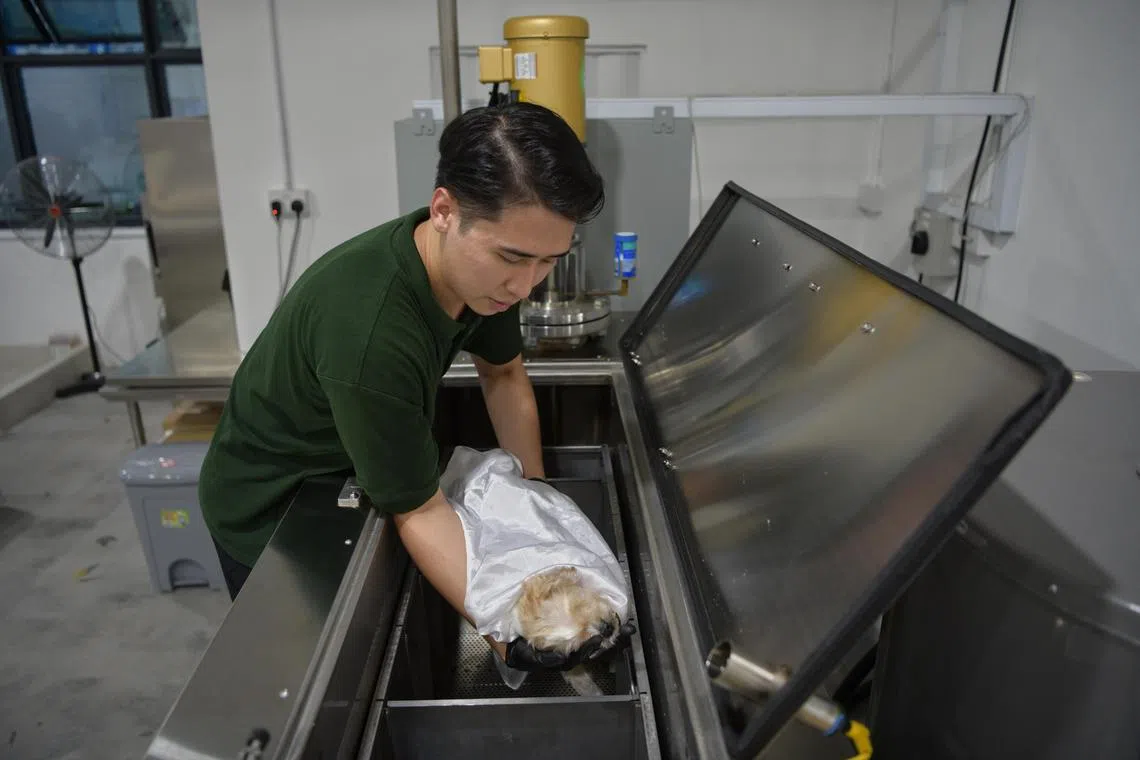
The Green Mortician co-founder Yang Loo performing aquamation, or water cremation, for Yuki, a shih tzu.
ST PHOTO: SHINTARO TAY
Follow topic:
SINGAPORE - When project manager Janice Soh saw a video of aquamation, or water cremation, by The Green Mortician that her friend shared, the 41-year-old knew immediately that this would be the best option for her ailing toy poodle, Toffee.
Her pet, which was born in 2008, had been admitted to hospital due to suspected congestive heart failure.
“I felt assurance after watching the video, and was finally able to let her go,” she told The Straits Times. “I told Toffee that she did not have to worry about mummy any more, and could stop fighting and struggling.”
Toffee was put to sleep on April 22. Her memorial service, attended by about 20 of Ms Soh’s friends, was held the following day at The Green Mortician, which performed aquamation on the dog.
A week later, Toffee’s ashes were ready. They now accompany Ms Soh everywhere in a koester stone, in which the ashes of the departed are sealed.

Toffee’s memorial service was held at The Green Mortician, which performed aquamation on the dog.
PHOTO: JANICE SOH
Ms Soh, who paid $577 for the service, said Toffee had always enjoyed her baths. She also wanted an eco-friendly cremation for Toffee.
“The whole process was gentle, respectful and peaceful, and it helped in the grieving and healing journey as a ‘parent’,” she said. She hopes aquamation will be extended to humans in time to come.
This, too, is the wish of the founders of The Green Mortician, the first and only provider of aquamation here. The company started operations in March.
Mr Yang Loo, 28, and his co-founder, Mr Joe Kam, 47, have performed the procedure on 50 pets at the 2,000 sq ft facility at Toh Guan Centre in Jurong East. These included dogs, cats, birds and hamsters.
They brought in the US$200,000 (S$270,000) aquamation system from the United States.
“There is definitely growing acceptance and demand for an additional end-of-life solution in Singapore, considering the limited options available in our land-scarce country,” Mr Loo said.
Aquamation, scientifically known as alkaline hydrolysis, has been widely available for pets in the US for several years. Several countries and US states have also legalised it for human remains.
The technology has been in use by universities and the scientific industries for over 25 years. It has been adopted for the final disposal of human bodies donated to medical science since 1995.
The body of the late Nobel Peace laureate, Archbishop Desmond Tutu, underwent aquamation.
Unlike fire or flame cremation, which uses intense heat of up to 1,000 deg C, aquamation operates at a low temperature below 95 deg C. A full cycle uses 900 litres of water for a maximum capacity of 181kg of carcasses once a day.
The carbon footprint is one-tenth that of flame-based cremations, and there are no harmful emissions as there is no burning involved, Mr Loo said.
In a clean stainless steel system, a warm solution consisting of 95 per cent water and 5 per cent alkali flows gently across the animal for a number of hours. The hydrolysis process uses water and bases to reduce organic tissue into their molecular components of amino acids and salts.
It is similar to decomposition, but accelerated. There is also 20 per cent to 40 per cent more ash returned to families, compared with using flame cremation.
Said Mr Loo: “We also make our facility less depressing and more comforting, such as the high ceilings and nature-inspired decor.”
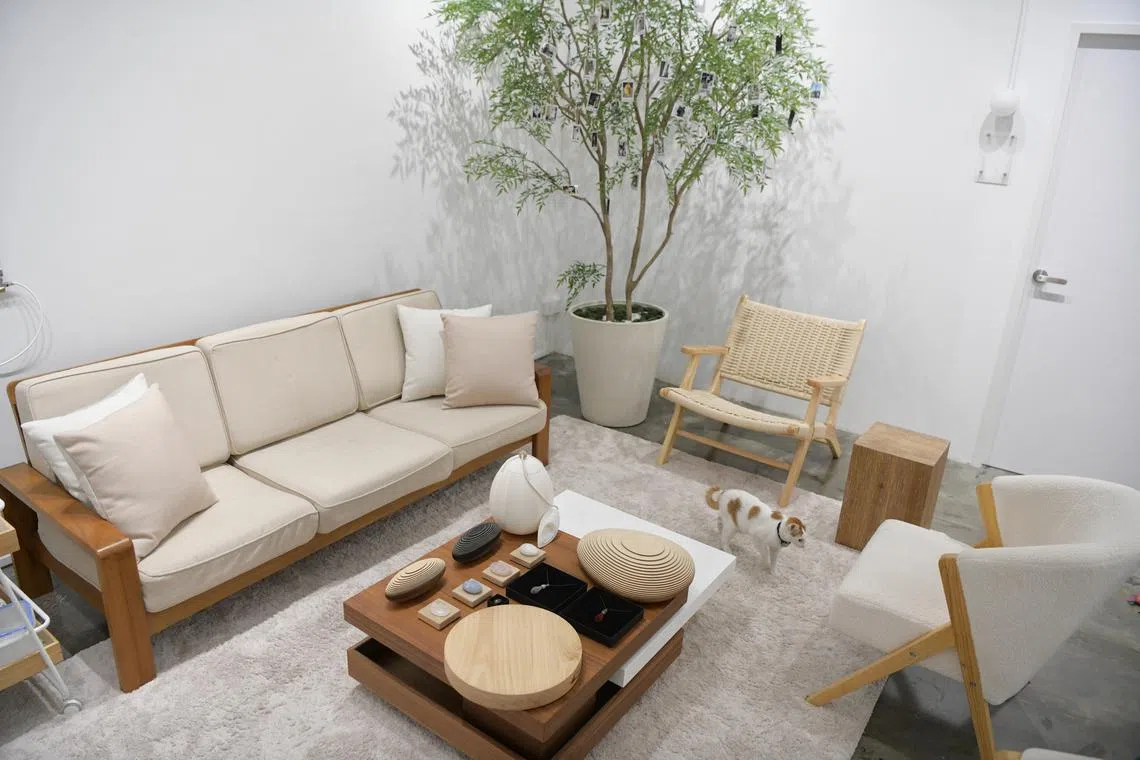
The Green Mortician’s facility at Toh Guan Centre in Jurong East.
ST PHOTO: SHINTARO TAY
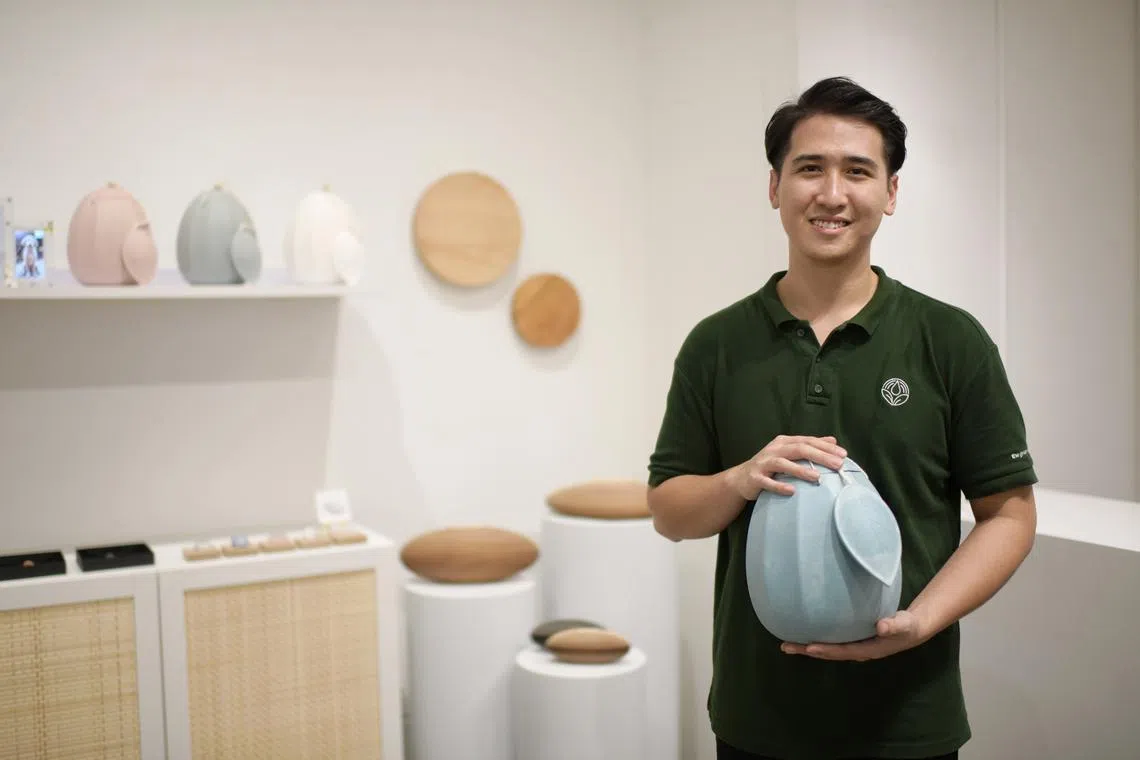
The Green Mortician co-founder Yang Loo holding one of the urns that the company offers.
ST PHOTO: SHINTARO TAY
The natural artisanal urns also look more like modern art pieces.
While the whole process takes longer than flame cremation, some pet parents appreciate more time given for the final send-off.
Marketing executive Sayhui Leong, 26, used aquamation for her 14-year-old mongrel Ginger in May, after the dog died from injuries resulting from a hit-and-run accident. She chose aquamation as Ginger loved nature, and it was the most natural cremation to her.
“Most cremation places host you for about 30 to 45 minutes, but we were allowed two hours to say our goodbyes,” she said. “It just felt like a time and space for us to celebrate her life as well.”

Marketing executive Sayhui Leong chose aquamation as Ginger loved nature, and it was the most natural cremation to her.
PHOTO: @STUDIOHIPPOCAMPOS
One major barrier to water cremation is the price tag. The company charges $577 to $777 for the water cremation alone.
In water cremation, the used water is treated at a licensed treatment facility. This effluent treatment can sometimes account for up to 50 per cent of the costs.
Mr Loo is in talks with national water agency PUB and the National Environmental Agency to repurpose the used water and make the process more sustainable, which in turn lowers the cost barrier for people to pick this greener option.
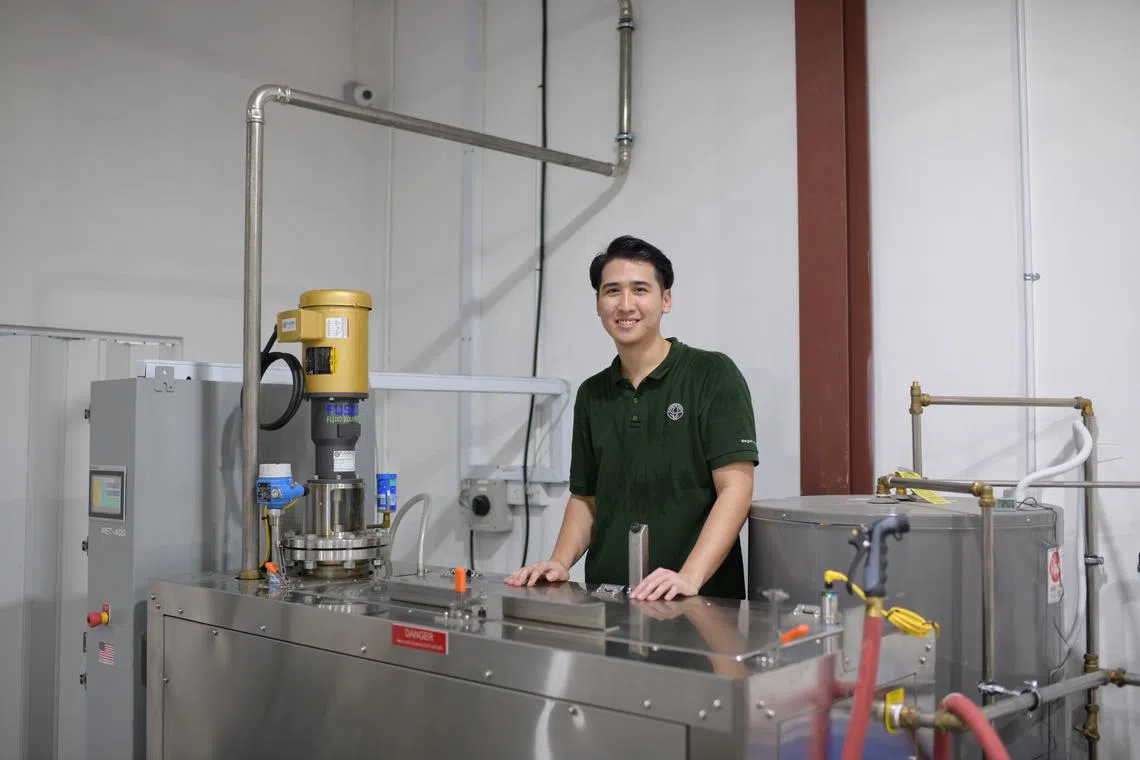
Mr Yang Loo (above) and his co-founder, Mr Joe Kam, had brought in the US$200,000 (S$270,000) aquamation system from the United States.
ST PHOTO: SHINTARO TAY
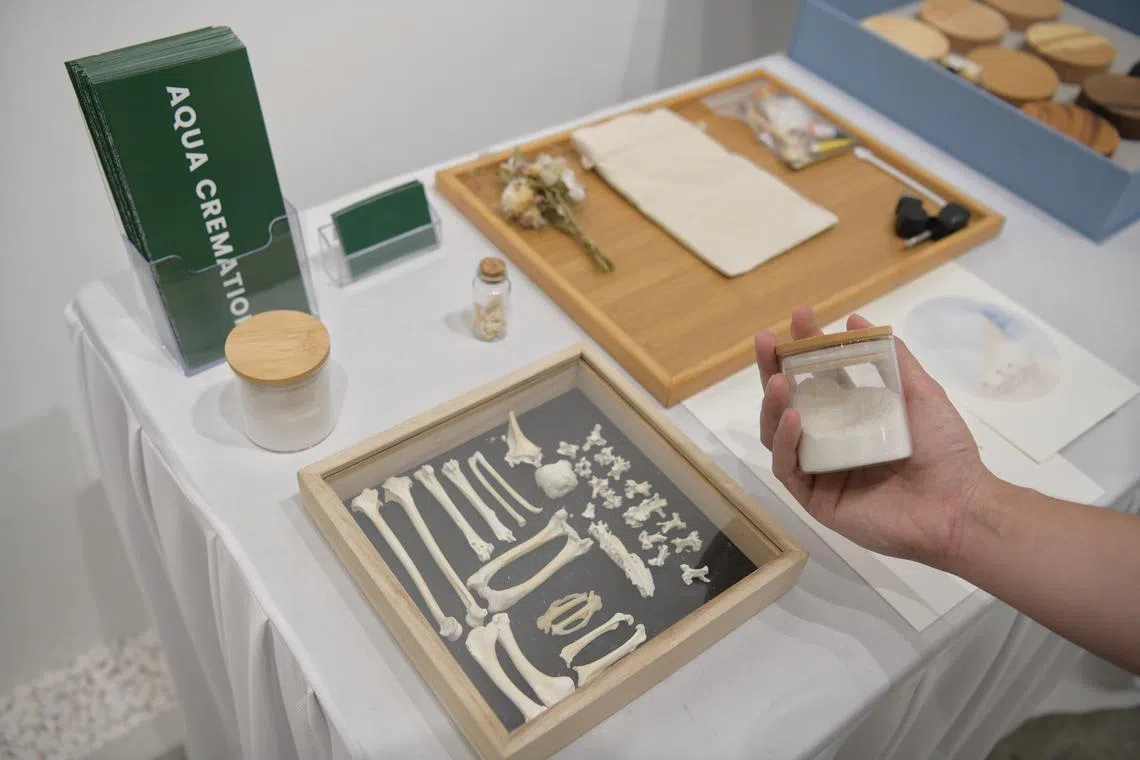
One major barrier to water cremation is the price tag. The company charges $577 to $777 nett for the water cremation alone.
ST PHOTO: SHINTARO TAY
The alkaline hydrolysis process produces a sterile solution of amino acids, sugars, nutrients, salts and soap in a water solution. These are the by-products of natural decomposition, and an alternative way to fertilise crops and plants, he said.
In some countries, this liquid solution is used to boost soil fertility.
Mr Loo was quick to add that there is no right or wrong about the two cremation methods – it is just a matter of preference.
“Our aquacremation services provide an additional option, and people like options.”

